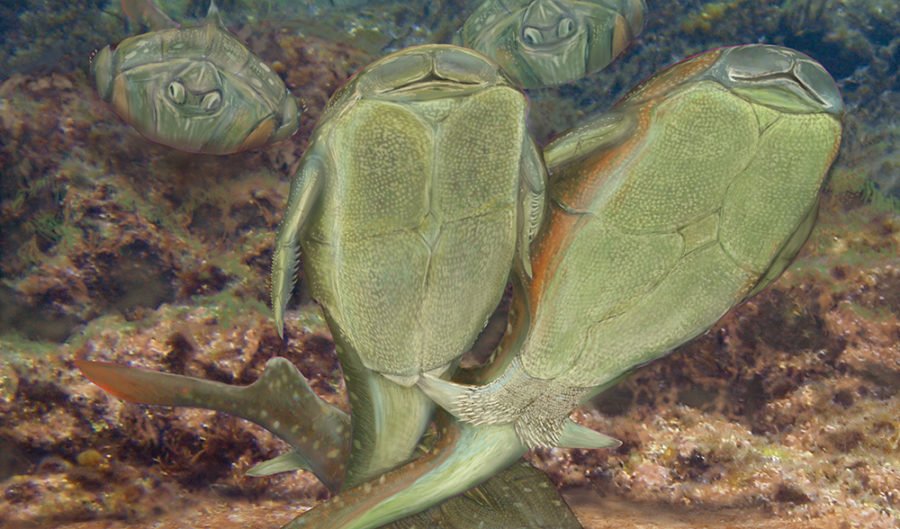Origins of sex reveal that fish did it sideways

ANALYSIS OF 385-million-year-old fish fossils has revealed the origins of vertebrate sexual reproduction, and it appears they did it sideways.
Long-extinct antiarch placoderms – prehistoric armoured fish – represent some of the earliest back-boned animals on the evolutionary tree. It had been thought that these fish, like most others, spawned to reproduce.
The newly discovered fossils of Microbrachius dickis, found in Estonia in 2013, show for the first time, clear evidence of unique male and female sexual organs, with males possessing claspers, and females developing fixed plates to lock the claspers in for mating.
“Until this point in evolution, the skeletons of jawed vertebrates couldn’t be distinguished because males and females had the same skeletal structures,” says Dr Brian Choo, Flinders Postdoctoral Research Fellow and co-author of the paper
Separate male and female organs indicate these fish would have been capable of internal rather than external sex.
“Our discovery pinpoints the evolutionary origin of copulation as a way of mating and the origin of internal fertilisation in all backboned animals,” says Dr John Long, a palaeontologist from Flinders University in Adelaide and lead author of the report published today in the journal Nature.
Ancient fish mated “square-dance style”
The finding also served to reveal the unusual mating strategy used by this ancient group, which involved a sideways position with their bony arms locked together, says John. “These fish.. .did it sideways, square-dance style. This enabled the males to manoeuvre their genital organs into the right position for mating,” he adds.

The female, on the left, has plates for clamping the male’s claspers, seen on the right.
The fossils will help scientists understand the path followed by sexual reproduction in vertebrate evolution, says John, who was part of the team who discovered the world’s oldest fossil of live birth.
“Our findings suggest that internal fertilisation evolved at the same time as fishes evolved jaws and paired hind limbs,” he says.
Further along the evolutionary road sex was dropped, when fishes evolved spawning on water, he says. But then, things changed again. “Later it evolved again as fishes left the water and invaded land as tetrapods,” says John.

Evolution of sexual intercourse
Overall, the results suggest that the evolutionary path followed by sexual reproduction is complex.
“So, there’s a clear signature that reproductive strategies change throughout vertebrate evolution internal-external, flipping back and forth more than might commonly be considered,” says Michael Coates, an evolutionary biologist from the University of Chicago in the USA.

